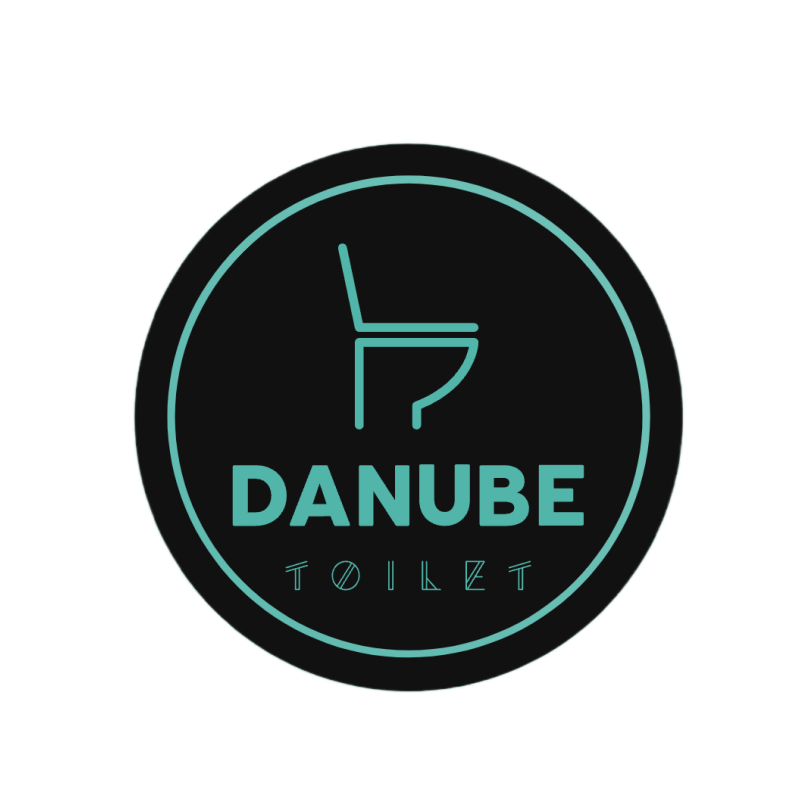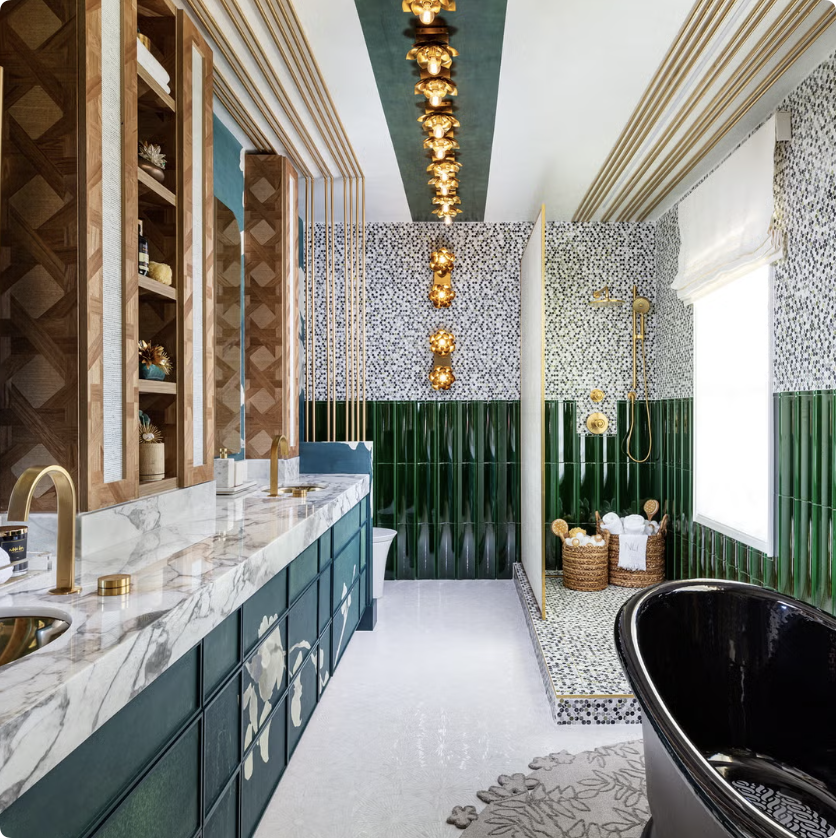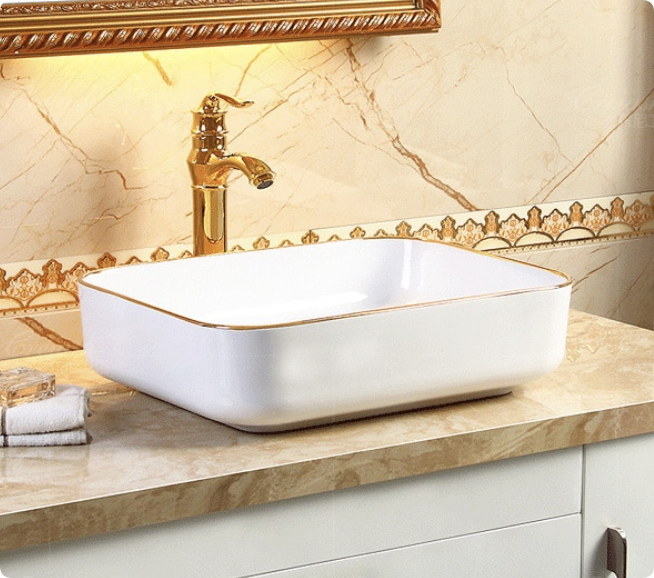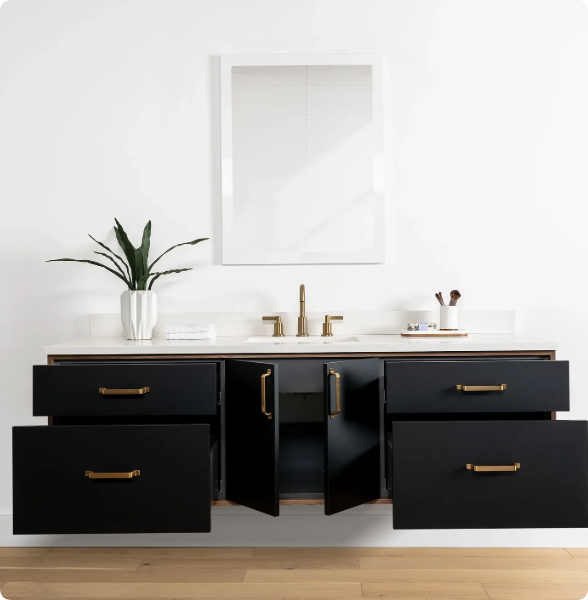From colors and styles to sourcing preferences, the Middle East is shaping global bathroom aesthetics
In the world of bathroom design, one region is rapidly emerging as both a high-value buyer and a creative trendsetter—the Middle East. Whether it’s the gold-accented hotel bathrooms of Dubai or the spacious smart bathrooms in Riyadh villas, one thing is clear: Middle Eastern buyers are influencing what the world now considers “modern luxury” in sanitary ware.
For global manufacturers offering OEM and ODM services, understanding the needs of Middle Eastern buyers isn’t just about chasing volume—it’s about shaping design, materials, and product experience in alignment with this region’s unique tastes and expectations.
1. What Do Middle Eastern Buyers Look For? It’s About More Than Just “Gold and Glamour”
Middle Eastern clients care deeply about more than functionality in a bathroom. For them, it’s about ambience, elegance, cultural representation, and the emotional feel of the space. Their preferences can be clearly seen across three key dimensions:
✅ Color Preferences: Texture, Opulence, and Cultural Identity
Middle Eastern buyers tend to favor bold, elegant colors that carry meaning or status. Popular bathroom color combinations include:
- Ivory with gold trim – Symbolizes purity and prestige; often seen on smart toilet units and vanity edges.
- Peacock blue with bronze fixtures – A regal combo popular in high-end villa projects.
- Marble gray textures – Common in premium apartments and hotel bathrooms.
- Matte black with brushed metal – Found frequently in wall-mounted bathroom vanities with LED mirror.
- Desert beige or champagne – Matches well with natural stone architecture common in the region.
These finishes are not limited to walls or cabinets—buyers frequently request custom ceramic toilets for hotels with tailored glaze tones or metallic trim as part of OEM orders.
✅ Style Preferences: Bold Yet Grounded Designs
Middle Eastern clients favor styles that appear solid, grand, and integrated. Key design choices include:
- Larger dimensions – Like a double sink bathroom cabinet for villas, offering comfort for family spaces.
- Textured carvings or relief patterns – Especially Islamic geometric motifs on cabinet doors and mirrors.
- Integrated functionality – Mirrors with built-in defoggers, LED lights, and storage shelves.
- Comfort-height toilets – Reflecting cultural values around multigenerational homes and accessibility, including ADA compliant toilets for senior housing.
Interestingly, these preferences are increasingly influencing product development in the U.S. and Europe, signaling a shift in what’s considered “mainstream bathroom design.”
2. Five Distinct Traits of Middle Eastern Sourcing Behavior
Beyond aesthetics, the way Middle Eastern buyers source their bathroom products is also reshaping the global supply chain:
| Sourcing Trait | What Middle Eastern Buyers Prefer | What It Means for Manufacturers |
|---|---|---|
| Large orders, fast turnaround | Project-based, bulk purchases in fixed time windows | Requires agile production scheduling |
| High customization | Custom logos, color combinations, bilingual packaging | Modular design + fast prototyping needed |
| Emphasis on samples | Product samples often required before deal closure | Sample responsiveness becomes critical |
| Prefer factory-direct deals | Direct engagement at exhibitions or online platforms | Manufacturers need global visibility |
| Strict certifications | Especially for government and hotel projects | ISO, WELS, SASO certificates essential |
Sourcing often happens through exhibitions like The Big 5 Dubai, or industry platforms such as Zawya and Gulf Construction Online, which Middle Eastern buyers use to identify reliable, certified suppliers.
3. Product Demand Snapshot: What They Want and How to Talk About It
Understanding product-level expectations helps align SEO strategy with real user intent. Here’s how Middle Eastern needs match key long-tail keywords:
| Product Category | Middle Eastern Preferences | Suggested Long-Tail Keyword |
|---|---|---|
| Smart Toilets | Remote controls, heated seats, multi-nozzle sprays | smart toilet OEM manufacturer |
| Ceramic Washbasins | Splash-proof rims, under/overmount styles | custom ceramic washbasins for hotels |
| Vanity Cabinets | LED mirror integration, ample storage | wall-mounted bathroom vanities with LED mirror |
| Double Basin Cabinets | For spacious master suites and villas | double sink bathroom cabinet for villas |
| Comfort-Height Toilets | For senior-friendly or multigenerational use | ADA compliant toilets for senior housing |
For example, instead of writing awkward keyword stuffing like “our ADA toilet is the best”, a more SEO-natural sentence would be:
“To meet the growing need for multigenerational homes in Saudi Arabia, more developers are requesting ADA compliant toilets for senior housing that offer both functionality and dignity.”
4. The Middle East Isn’t Just a Market—It’s Becoming a Design Influence
Middle Eastern taste is no longer a regional niche—it’s becoming globally aspirational.
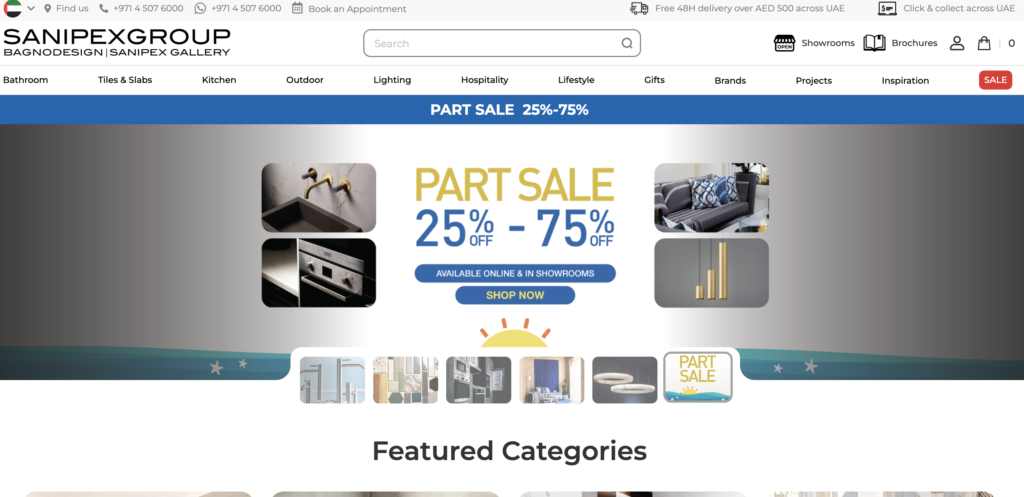
- RAK Ceramics, for instance, offers high-gloss marble-effect basins that are now also popular in European luxury apartments.
- Brands like Sanipex Group, with their balance of cultural detailing and smart integration, are exporting Middle Eastern aesthetics to international hotel chains.
As more design firms and developers embrace these standards, manufacturers that understand Middle Eastern preferences today will be more relevant globally tomorrow.
FAQ: People Also Ask…
Q1: Do Middle Eastern buyers prefer wall-hung or floor-standing toilets?
A: High-end villas and hotels typically opt for wall-hung toilets due to their sleek look and easy cleaning. Floor-standing units still dominate commercial or public-sector projects.
Q2: Are smart bathroom features considered essential?
A: Absolutely. In countries like the UAE and Qatar, smart toilets and mirrors are often viewed as a default feature in premium projects.
Q3: Is environmental sustainability a factor?
A: Yes, especially in government and hotel projects. WELS-rated flushing systems and energy-efficient mirrors are increasingly in demand.
Q4: Should products be labeled in Arabic?
A: Strongly recommended. Most large-scale orders require bilingual (Arabic-English) packaging and installation manuals.
Q5: Is sample approval always part of the process?
A: Nearly always. Buyers often request 3–5 samples in varying colors, finishes, or formats before finalizing specs.
Conclusion: The Middle East Holds the Blueprint for Tomorrow’s Bathroom
Middle Eastern buyers are reshaping what the world considers “desirable” in bathroom design. Their focus on refined colors, functional luxury, personalized sourcing, and high certifications sets a new global benchmark.
For OEM/ODM suppliers worldwide, adapting to these preferences isn’t just a regional strategy—it’s a way to gain relevance in a more design-conscious global market.
Danube, a China-based manufacturer of ceramic toilets, washbasins, bathroom vanities, smart toilets, and LED mirrors, offers end-to-end OEM and ODM services for bathroom brands and project buyers around the world. With a deep understanding of Middle Eastern buyer expectations, Danube helps global clients deliver products that combine cultural appeal with cutting-edge functionality.
